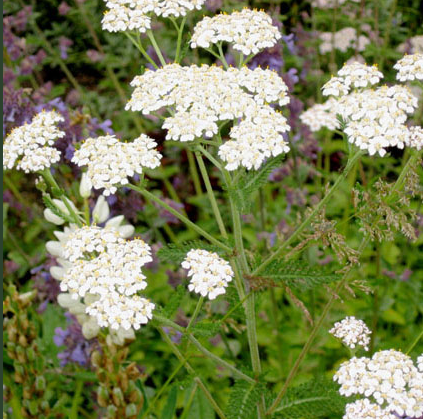Plant Specifications
Achillea millefolium, Asteraceae or ‘Common’ Yarrow. Perennial. Sun. Height: 16” Width: 10 – 14”
Yarrow is a flowering plant native to Europe, it has naturalized throughout temperate North America. In New Mexico and southern Colorado, it is called plumajillo, or “little feather”, for the shape of the leaves. Several tall stems rise from a rhizome root (fibrous underground horizontal rootstock) with lance-shaped and finely divided pale green leaves evenly distributed up the stem. White Yarrow blooms in white, flat-domed shaped flower heads; up to ten or twelve per plant.
In the Garden
Yarrow is a drought tolerant species and often found in the grasslands and open forests throughout the United States. The species name, millefolium ‘of a thousand leaves’ – describes the fine, feathery foliage which resembles a fern. Yarrow can endure dry, impoverished soil and survive with little maintenance. It thrives and blooms from Spring to Fall. Notorious for its reputation as invasive, the Texas heat apparently keeps that tendency in check. Generally hardy throughout the South Texas winter but guard against allowing it to get too dry nor too wet. Trim back dead flower blooms to encourage new growth.
Plant Uses
Great for use in teas, Yarrow has seen historical use as a medicine, often because of its astringent effects. Decoctions have been used to treat inflammations, such as hemorrhoids, and headaches. Confusingly, it has been said to both stop bleeding and promote it. Depending on the form it is administered it can do both, which is why when dabbling in using herbs for medicine it is proper to contact a herbalist or other expert.

